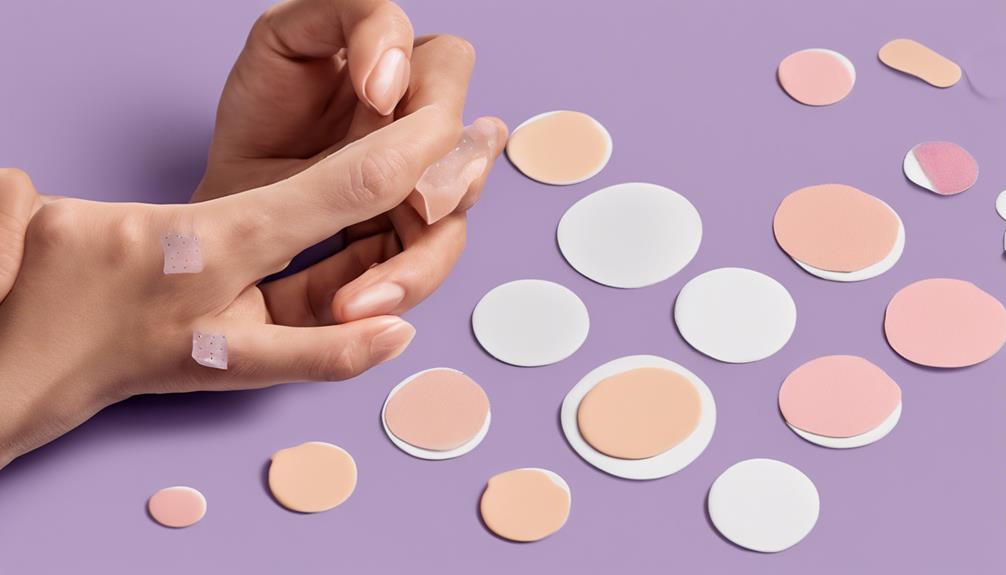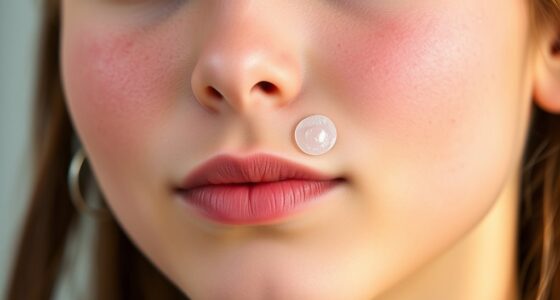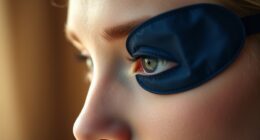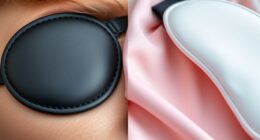Acne patches, made from gel-forming agents such as pectin or gelatin, actively extract pus and fluids from pimples, helping to speed up recovery and reduce severity. Their gentle gel structure promotes healing, improves acne-related issues like redness and oiliness, and serves as a protective barrier against bacteria. These patches also include ingredients like salicylic acid to effectively combat acne. By focusing on reducing inflammation and creating a healing environment, they demonstrate noticeable improvements in severity. For those interested in how acne patches work, their innovative design and ingredients offer a tailored solution for handling breakouts.
Key Takeaways
- Acne patches draw out fluids and pus from pimples to aid in faster recovery.
- They create a protective barrier against bacteria, preventing infection.
- Ingredients like salicylic acid unclog pores and reduce inflammation.
- Hydrocolloid patches target inflammation reduction for accelerated healing.
- Patches maintain a moist environment, improving skin texture and reducing redness.
What Are Acne Patches?
Acne patches, innovative skincare solutions, are small adhesive stickers designed to be directly applied onto individual pimples. Made of hydrocolloid, these patches act as a barrier against external factors, promoting the healing process for acne. By absorbing oil, dirt, and fluid from the pimple, these patches create an ideal environment for the skin to recover. The hydrocolloid material, commonly used in wound healing, aids in faster recovery by maintaining a moist environment and preventing scarring.
These patches are a convenient and effective way to target specific pimples without drying out the surrounding skin. Each pack typically contains multiple patches for one-time use, ensuring that every pimple receives individualized treatment. Acne patches are gentle on the skin and provide a protective barrier that prevents further irritation. By adhering directly to the pimple, they discourage picking or squeezing, promoting a healthier healing process. In summary, acne patches offer a simple yet powerful solution for managing and treating acne effectively.
How Acne Patches Function
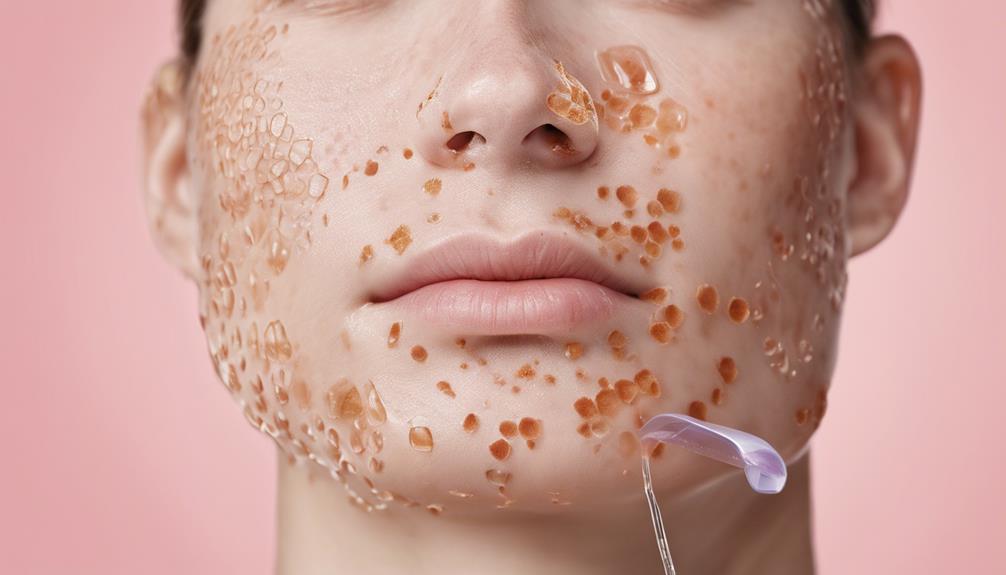
Acne patches work by absorbing excess oil, targeting specific blemishes, and promoting faster healing.
The hydrocolloid material in these patches helps draw out pus and oil from pimples, aiding in reducing inflammation and redness.
Absorbing Excess Oil
When addressing excess oil on the skin, acne patches function by effectively absorbing it along with bacteria and pus from pimples.
The hydrocolloid material in the patches plays a key role in this process, creating a gel that helps in skin healing.
By absorbing excess oil and fluids, these patches create an ideal healing environment, drawing out impurities and preventing infections.
As the patches turn white, it indicates their effectiveness in absorbing fluids and impurities.
This mechanism not only helps in absorbing excess oil but also aids in reducing inflammation, redness, and oiliness.
Targeting Specific Blemishes
Using a hydrocolloid material, these patches target specific blemishes by effectively absorbing excess oil, bacteria, and pus from open pimples. This targeted approach helps in healing by creating an ideal environment for the blemish to resolve. Hydrocolloid patches are a specific type of acne treatment that not only absorbs impurities but also helps prevent acne scarring and further breakouts.
Promoting Faster Healing
Promoting faster healing, acne patches function by creating a moist environment that aids in the absorption of fluids and pus from pimples. Hydrocolloid patches, commonly used in skincare, contain acne-fighting ingredients that help heal blemishes effectively. By maintaining a moist environment, these patches facilitate the extraction of impurities, reducing inflammation and promoting quicker recovery.
The hydrocolloid material not only draws out fluids and pus but also forms a protective barrier over the pimple, preventing further irritation and allowing the skin to heal undisturbed. Through research, it has been demonstrated that these patches lead to a visible reduction in acne severity, redness, oiliness, and dark pigmentation, making them a valuable tool in combating acne and improving skin health.
Hydrocolloid Patch Composition
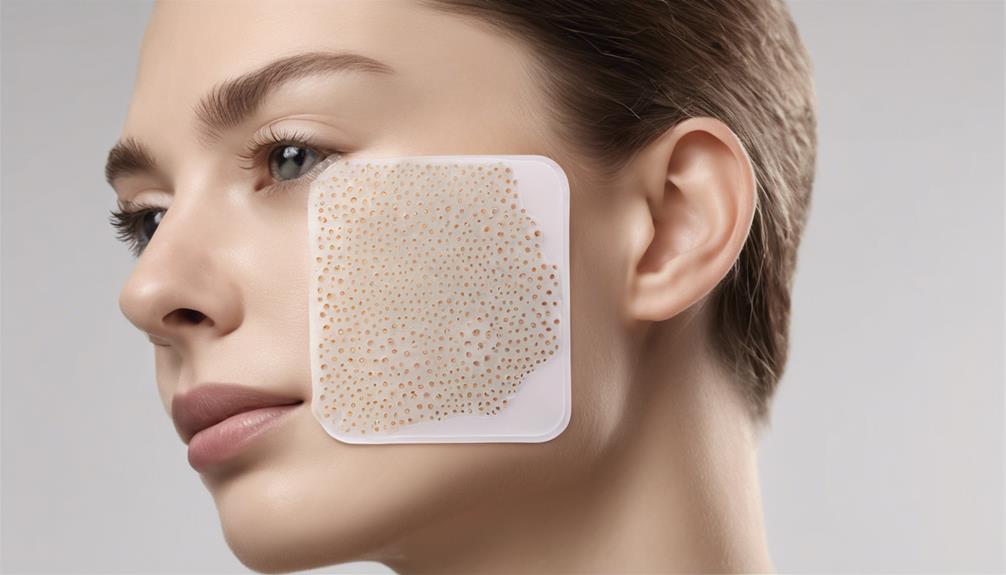
Composed of gel-forming agents such as pectin or gelatin, hydrocolloid patches actively draw out fluids and pus from pimples to create a soft gel conducive to healing. The gel helps in maintaining a vital environment, which promotes faster healing of the affected area. Studies have shown that these patches not only aid in faster recovery but also lead to a significant reduction in acne severity over time. By effectively drawing out impurities and forming a protective barrier, hydrocolloid patches can improve various aspects of acne, including redness, oiliness, dark pigmentation, and sebum levels in acne-prone skin.
Understanding the composition of hydrocolloid patches is essential for maximizing their benefits in treating acne. While different brands may vary in effectiveness, the fundamental principle remains consistent – the gel-forming properties actively work to draw out fluids, reduce inflammation, and create an excellent environment for the skin to heal. By incorporating these patches into a skincare routine, individuals can take proactive steps towards improving their skin health and managing acne-related concerns effectively.
Benefits of Using Acne Patches

Creating a protective barrier against bacteria and promoting faster healing, acne patches offer numerous benefits in managing acne breakouts. These patches not only protect the skin from external contaminants but also help heal skin imperfections effectively. By absorbing excess oil, pus, and bacteria from pimples, acne patches promote healing and prevent further infection. Some patches are infused with acne-fighting ingredients like salicylic acid and benzoyl peroxide, which actively work to combat acne-causing bacteria. Additionally, hydrocolloid patches create an ideal environment for healing, maintaining moisture to facilitate the recovery process.
To better illustrate the benefits of using acne patches, let's take a look at the table below:
| Benefits of Acne Patches | Description |
|---|---|
| Heal Skin | Acne patches aid in the healing process by absorbing excess oil and promoting a clean environment for recovery. |
| Promote Healing | These patches accelerate the healing of acne lesions, reducing the time it takes for pimples to resolve. |
| Protect Skin | By creating a barrier, acne patches shield the skin from bacteria and external factors, preventing further irritation. |
| Acne-Fighting Ingredients | Some patches contain ingredients like salicylic acid and benzoyl peroxide, which actively combat acne-causing bacteria. |
Acne Severity Reduction
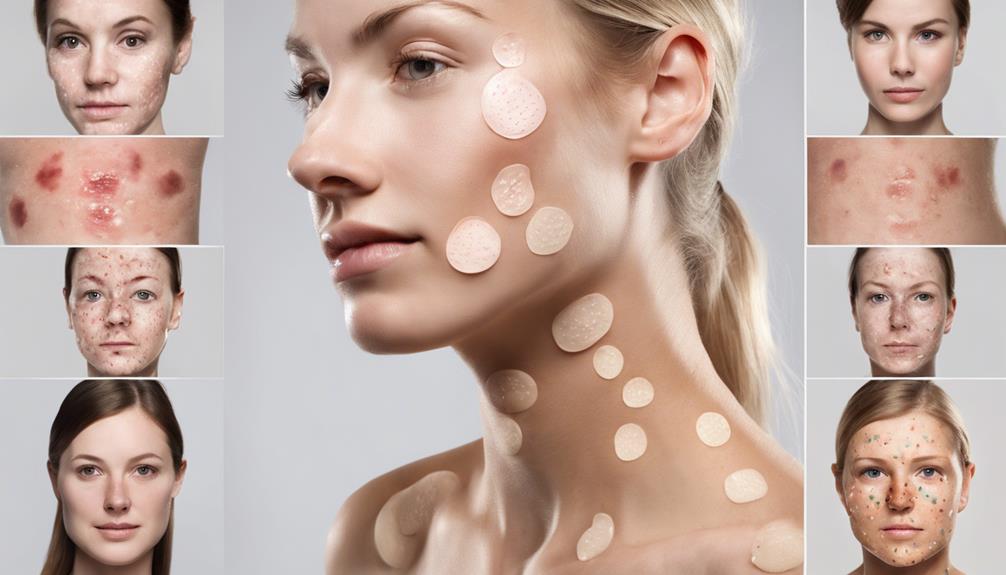
In reducing acne severity, hydrocolloid patches have demonstrated significant efficacy according to studies. These medical-grade patches, such as Mighty Patch, are designed to target inflammation reduction, leading to faster healing of acne. By adhering to the skin and creating a protective barrier, hydrocolloid pimple patches work to draw out impurities, including excess oil and pus, from the blemish. This process not only aids in the healing of individual acne lesions but also contributes to an overall reduction in acne severity.
Studies have shown that the application of hydrocolloid patches can improve various aspects associated with acne, such as redness, oiliness, dark pigmentation, and sebum levels. Their ability to absorb impurities and reduce inflammation plays an essential role in promoting faster healing of blemishes, ultimately leading to a visible reduction in acne severity. When seeking to address acne-related concerns, utilizing hydrocolloid patches can be a valuable addition to one's skincare routine, offering targeted treatment and visible results in skin improvement.
Reducing Inflammation With Patches
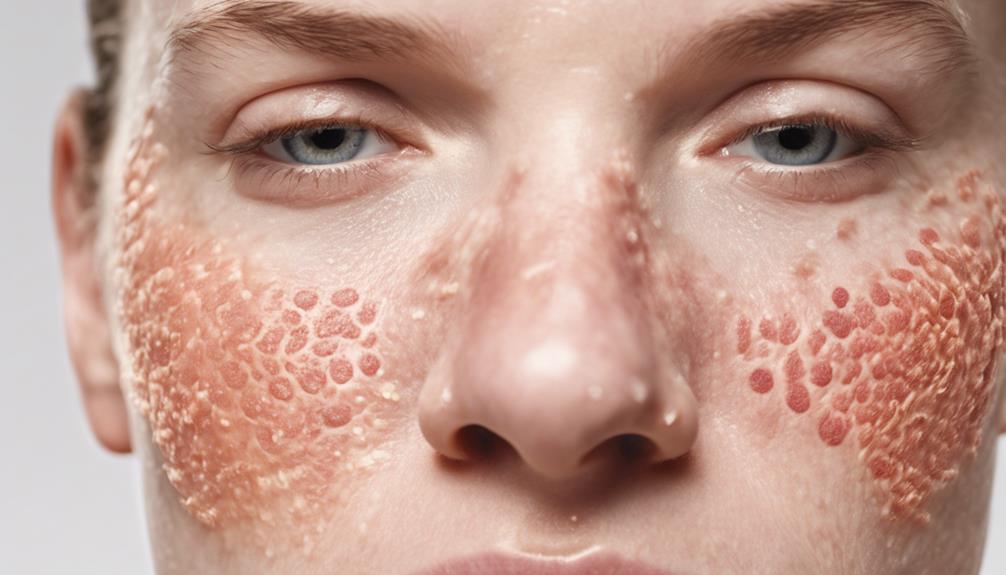
Hydrocolloid patches contain inflammation-fighting ingredients that work by absorbing excess oil and fluid, which helps reduce swelling and redness in pimples.
These patches offer targeted spot treatment benefits, addressing specific areas of concern effectively.
Studies show a significant decrease in acne severity, highlighting the effectiveness of using patches to combat inflammation.
Inflammation-Fighting Ingredients in Patches
Utilizing potent inflammation-fighting ingredients such as salicylic acid, tea tree oil, and niacinamide, acne patches effectively target and reduce skin inflammation, a pivotal aspect in combating acne development.
- Salicylic acid: Unclogs pores and reduces inflammation.
- Tea tree oil: Contains antibacterial properties to combat acne-causing bacteria.
- Niacinamide: Improves skin texture and helps reduce redness and inflammation.
- Synergistic effect: These ingredients work together to specifically target and reduce inflammation, playing an essential role in managing acne outbreaks.
Through the combined action of these components, acne patches provide a multifaceted approach to treating acne, addressing both the visible symptoms and underlying causes.
Targeted Spot Treatment Benefits
Acne patches provide targeted spot treatment benefits by effectively reducing inflammation and redness in specific areas of the skin. These patches create a healing environment by keeping the affected area moist, which helps absorb excess fluids and speeds up the recovery process of acne lesions. By forming a protective barrier over the pimple, they also prevent further irritation and infection.
The concentrated ingredients in the patches work directly on the affected area, enhancing the effectiveness of spot treatment. Using these patches can visibly reduce the size and severity of pimples, providing quick relief and improving the overall appearance of the skin. So, incorporating acne patches into your skincare routine can serve you by targeting the problem areas efficiently for a clearer complexion.
Healing Process Acceleration
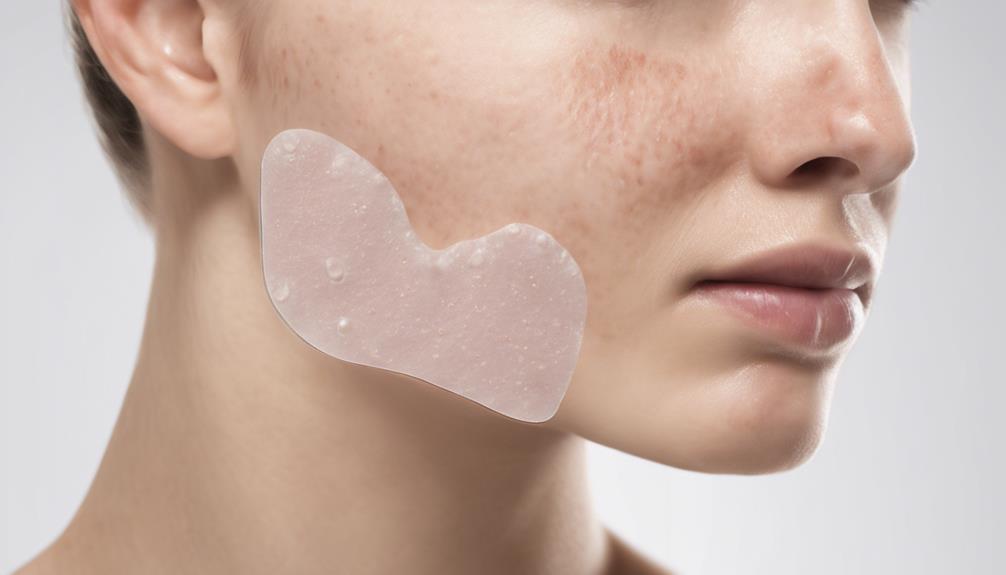
By creating a moist environment that supports faster recovery, acne patches facilitate the acceleration of the healing process. The gel-forming agents in these patches, such as gelatin or pectin, play an essential role in promoting skin healing by extracting impurities and aiding in wound healing.
Here are four key points to understand how acne patches accelerate the healing process:
- Moist Environment: Hydrocolloid patches create an ideal moist environment that promotes faster recovery by keeping the affected area hydrated and protected.
- Fluid Absorption: These patches draw out fluids, pus, and impurities from pimples, aiding in reducing inflammation and acne severity.
- Reduction in Symptoms: Studies have shown a significant reduction in acne severity, redness, oiliness, and dark pigmentation with the use of hydrocolloid patches.
- Medical-Grade Hydrocolloid: Acne patches like Mighty Patch, which use medical-grade hydrocolloid, visibly reduce redness and oiliness while accelerating the healing process.
Acne Patch Application Guide
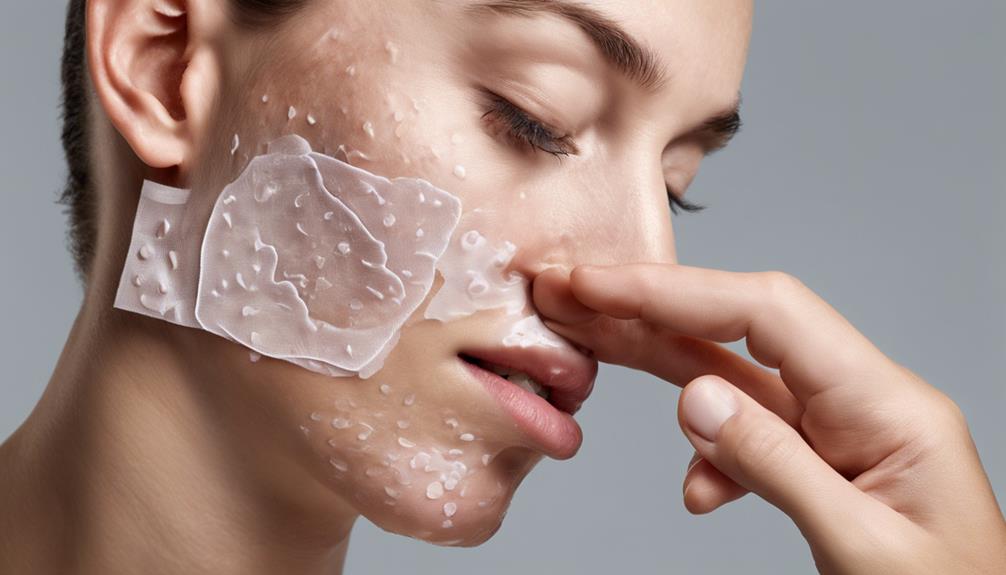
When applying acne patches, it's essential to properly place them on clean, dry skin to guarantee their effectiveness.
Following the instructions on the label guarantees the correct duration of wear, typically 6-8 hours for best results.
Pimple patches are most effective for open, draining pimples like pustules and papules, aiding in faster healing and preventing further skin damage.
Proper Patch Placement
For best results, make sure that the acne patch is applied directly over the pimple, adhering to clean, dry skin to facilitate absorption and barrier creation against bacteria. Proper patch placement plays an important role in the effectiveness of the patch by targeting the affected area directly. Here are some essential tips for correct patch placement:
- Cleanse: Gently wash and dry the skin before applying the patch.
- Position: Carefully center the patch over the pimple to ensure maximum contact.
- Press: Smooth out any air bubbles and press the patch gently onto the skin.
- Secure: Make sure the patch adheres well to form a protective barrier and aid in the absorption process.
Following these steps will optimize the patch's ability to draw out impurities and promote faster healing.
Duration of Application
To maximize the effectiveness of acne patches, it is recommended to leave them on for 6-8 hours, with overnight use being particularly beneficial for absorbing excess oil, pus, and bacteria from the pimple. Allowing the patch to work best over a longer period creates a moist environment that aids in healing breakouts by absorbing excess fluid and protecting your skin. Consistent application following instructions guarantees the patch can effectively heal breakouts, reducing inflammation and promoting recovery. An appropriate duration of application not only helps in absorbing impurities but also in maintaining a barrier that protects your skin from further irritation. It is essential to adhere to the suggested timeframe to optimize the benefits of using acne patches.
| Absorbs Excess Oil | Aids in Healing | Protects Skin |
|---|---|---|
| Creates Moist Environment | Reduces Inflammation | Prevents Irritation |
Skin Improvement With Patches
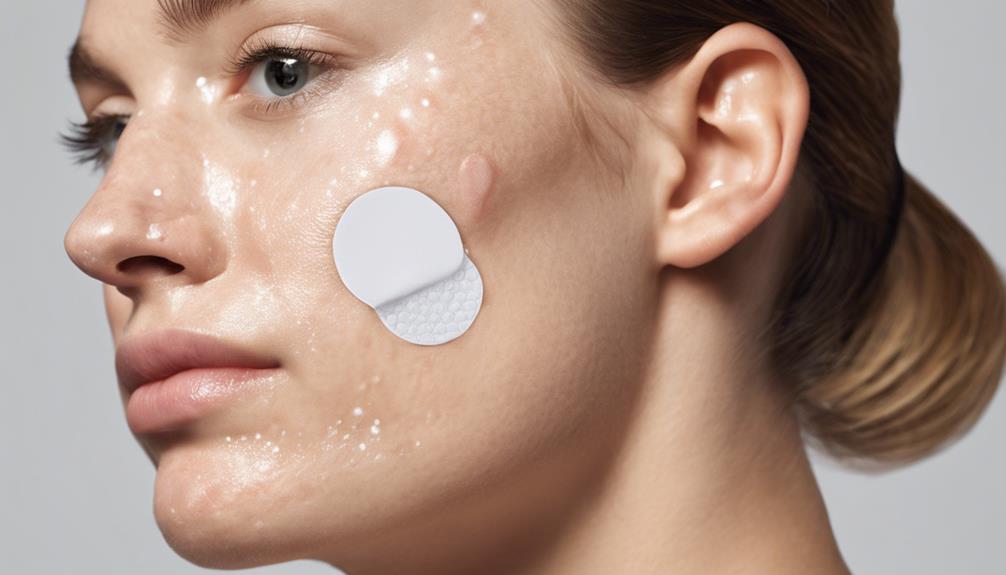
Skin improvement with patches is evident through the significant reduction in acne severity, including redness, oiliness, dark pigmentation, and sebum levels, as demonstrated by studies on hydrocolloid patches.
- Reduction in Acne Severity: Hydrocolloid patches effectively target various aspects of acne, such as inflammation and excess oil production, leading to visible improvements in skin condition.
- Moist Healing Environment: These patches create a favorable environment for the skin to heal faster by maintaining a moist environment that promotes the recovery process.
- Utilization of Medical-Grade Hydrocolloid: Products containing medical-grade hydrocolloid, like Mighty Patch, help in extracting impurities from the skin, resulting in reduced inflammation and overall enhancement in skin health.
- Global Acceptance: Hydrocolloid patches have gained recognition worldwide for their efficacy in treating diverse skin issues, with countries like Japan using them not only for acne but also for conditions like bedsores and pressure ulcers.
Patches Vs. Other Treatments
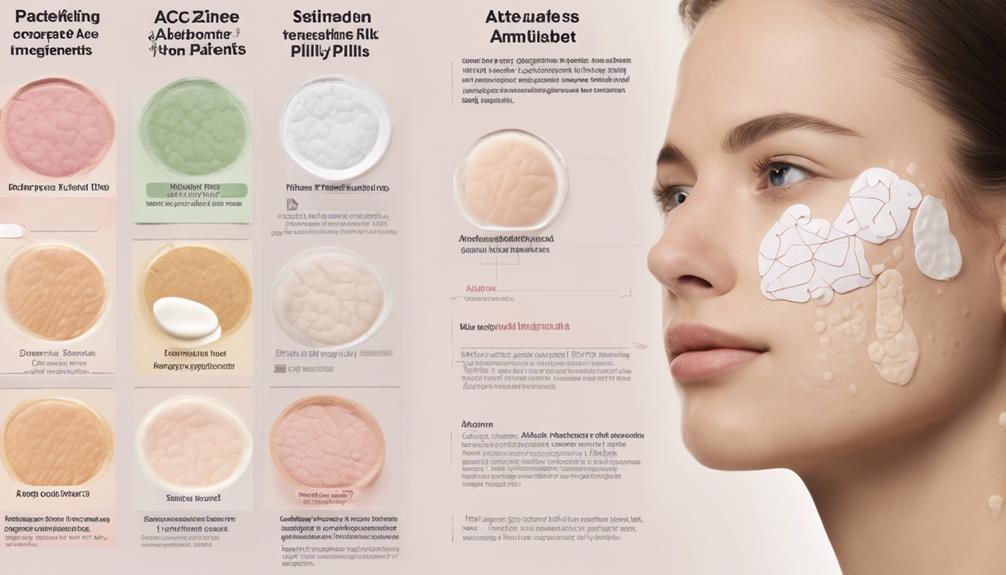
Comparatively, pimple patches demonstrate superior efficacy in reducing breakouts, redness, and oil when contrasted with skin tape. Pimple patches, particularly those made of hydrocolloid dressings, excel in wound care to help heal and treat acne. These patches create a favorable environment for healing by absorbing pimple fluid and preventing infections. While spot treatments like skin tape may cover acne blemishes, they do not possess the same wound-healing properties as hydrocolloid dressings found in pimple patches.
| Aspect | Pimple Patches | Skin Tape |
|---|---|---|
| Efficacy | Superior in reducing breakouts, redness, oil | Less effective for healing |
| Wound Healing | Aid in faster healing process | Lacks wound care properties |
| Targeted Treatment | Ideal for treating acne and wound care | Primarily cosmetic use |
| Absorption Capabilities | Absorbs pimple fluid and bacteria | Minimal absorption capacity |
Safety Considerations for Patches
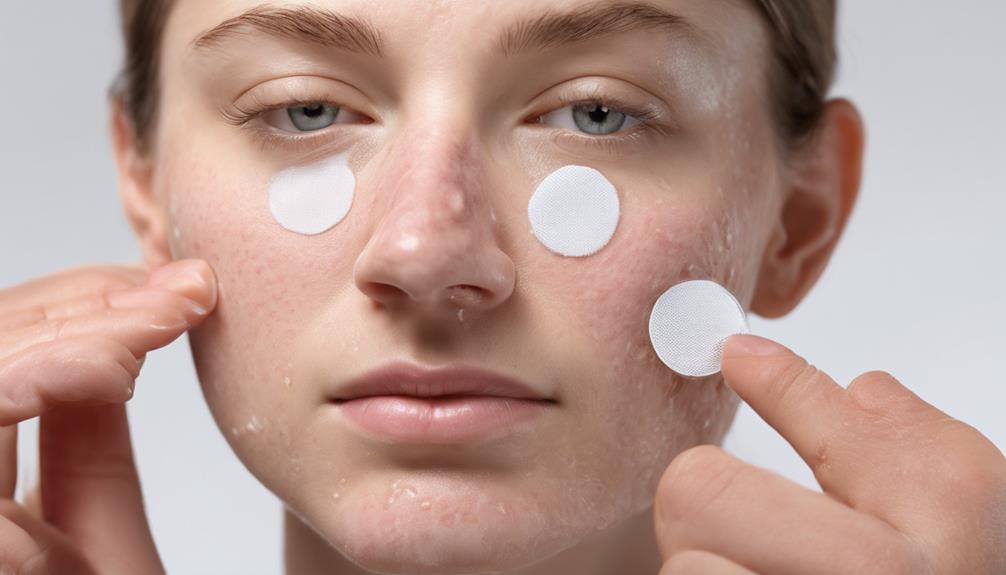
In considering safety when using acne patches, it's important to be mindful of potential skin irritation that may arise from the adhesive components of hydrocolloid patches.
Here are some key safety considerations for using acne patches:
- Adhesive Sensitivity: Individuals with sensitive skin may experience irritation or redness due to the adhesive in hydrocolloid patches. It's crucial to test a small area before applying the patch to guarantee compatibility with your skin type.
- Limited Effectiveness: Hydrocolloid patches mightn't be effective for treating blackheads, whiteheads, or cystic acne. Understanding their limitations can help manage expectations for their use.
- Irritation Risk: Prolonged use of acne patches can potentially dry out or irritate the skin. It's advisable to follow the recommended usage guidelines and give your skin breaks between applications.
- Acne Breakout Prevention: While acne patches can help treat existing pimples, they may not prevent new acne breakouts. Incorporating other skincare routines as recommended by dermatologists can complement the use of acne patches effectively.
Patches for Various Skin Issues
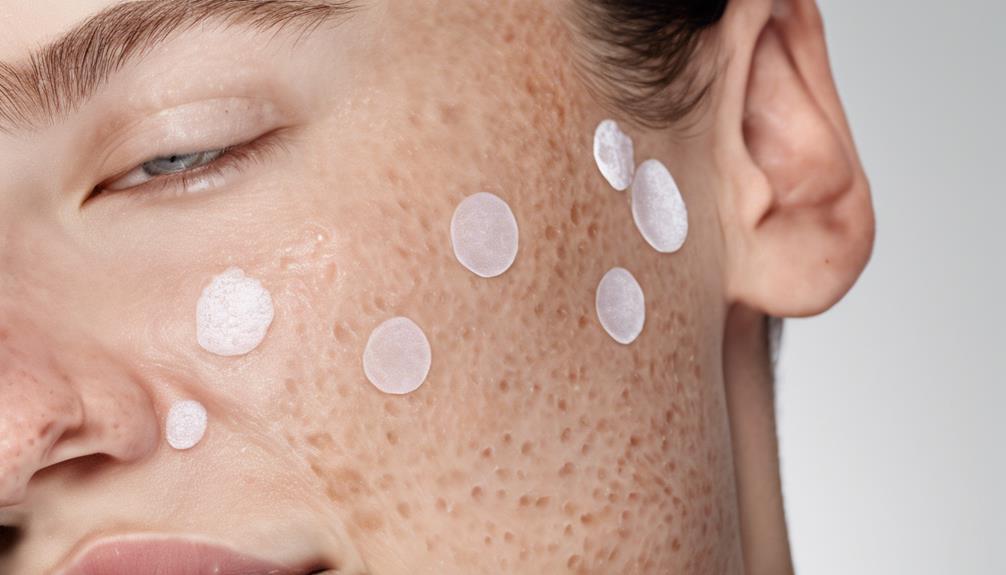
Exploring the versatility of patches extends beyond acne treatment to address a spectrum of skin concerns. Hydrocolloid acne patches, known for their effectiveness in reducing acne severity, can also be used to help treat various skin issues. These patches are not only beneficial for acne but are also gaining recognition for their efficacy in wound care and other skin problems. Below is a table illustrating the diverse use of hydrocolloid patches for different skin types:
| Skin Type | Issues Addressed |
|---|---|
| Acne-prone skin | Reducing acne severity |
| Oily skin | Managing excess oiliness |
| Sensitive skin | Minimizing inflammation |
| Combination skin | Balancing different skin concerns |
Hydrocolloid patches, initially popular for acne treatment, are now becoming a go-to solution for various skin issues due to their ability to draw out fluids and promote healing. Whether you have acne-prone, oily, sensitive, or combination skin, these patches can be a valuable addition to your skincare routine.
Frequently Asked Questions
How Do Pimple Patches Work Scientifically?
Pimple patches work by creating a moist environment that aids in faster healing of acne lesions. Made of hydrocolloid, they absorb excess oil, dirt, and pus while preventing further skin trauma.
Some patches contain active ingredients like salicylic acid and tea tree oil to target acne-causing bacteria. Research shows they effectively reduce acne severity, redness, oiliness, and pigmentation levels.
These patches provide a simple yet powerful solution for managing acne breakouts.
What Is the Chemistry Behind Pimple Patches?
The chemistry behind pimple patches involves a dual-layer design. An inner layer absorbs fluids from pimples, while the outer layer shields and protects.
Hydrocolloid material fosters a moist environment, expediting acne lesion healing. Some patches may contain salicylic acid, tea tree oil, or niacinamide for targeted treatment.
These patches work by using their gel-forming properties to draw out excess oil, dirt, and pus from pimples, aiding in the overall healing process.
What Is the Science Behind Hydrocolloid Patches?
Hydrocolloid patches work by absorbing oil and pus from pimples, promoting faster healing. These patches often contain ingredients such as salicylic acid or tea tree oil for added benefits.
Adhesives like acrylic or silicone keep the patches in place without irritating the skin. Research indicates that hydrocolloid patches can reduce acne severity, redness, oiliness, dark pigmentation, and sebum levels effectively.
What Do Acne Patches Pull Out?
Acne patches pull out excess oil, bacteria, and pus from pimples. They act as a protective barrier, absorbing impurities that contribute to breakouts. These patches effectively extract infected pus, aiding in faster healing and preventing further inflammation.
Hydrocolloid patches are particularly useful in reducing redness, promoting skin healing, and preventing scarring. Their mechanism revolves around creating an ideal environment for the skin to recover and rejuvenate.
What is the Mechanism Behind Acne Patches and How Do They Work?
Acne patches, also known as star patches for acne, work by creating a moist environment that promotes healing and prevents bacteria from entering the affected area. They contain ingredients like hydrocolloid that absorb impurities and speed up the healing process, effectively reducing inflammation and preventing scarring.
Conclusion
To sum up, acne patches offer a discreet solution for addressing skin concerns. These patches work by absorbing excess oil and promoting healing, leading to improved skin appearance.
With their hydrocolloid composition, acne patches provide benefits such as reducing acne severity and enhancing overall skin health.
While safety considerations should be kept in mind, patches can be a valuable addition to skincare routines for various skin issues.


